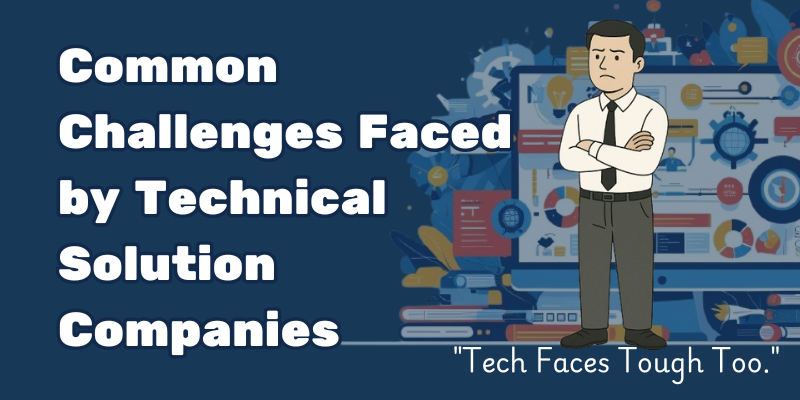Introduction
In today’s digital-first world, technical solution companies are at the forefront of innovation, poweringbusinesses with software, IT infrastructure, cloud services, AI, and more. But while these companieshelp others grow, they themselves face a unique set of challenges that can hinder scalability, servicequality, and client satisfaction.
Let’s explore the common challenges faced by technical solution companies.
✅ 1. Rapid Tech Changes
Staying current with AI, cloud, and automation is essential—but tough to keep up with.
✅ 2. Talent Shortage
Skilled IT professionals are in high demand and hard to retain.
✅ 3. Communication Gaps
Misunderstandings between tech teams and clients can derail projects.
✅ 4. Security & Compliance
Protecting data and meeting regulations like GDPR adds pressure.
✅ 5. Legacy Integration
Blending modern solutions with old systems is complex and error-prone.
✅ 6. Time & Budget Limits
Clients want fast, cheap, and perfect—often an unrealistic mix.
✅ 7. Managing Expectations
Unclear client goals lead to scope creep and misaligned results.
✅ 8. Poor Documentation
Without clear records, scaling and support become painful.
✅ 9. Measuring ROI
Proving the value of IT solutions isn’t always straightforward.
✅ 10. Scaling Sustainably
Handling multiple clients and tech stacks without burnout is a challenge.
Final Thought
Every challenge technical solution companies face is also an opportunity—to innovate, build trust,and stand out. By staying adaptable, client-focused, and committed to quality, these companies canturn obstacles into long-term success.
FAQs
1. Why is adapting to new technology a challenge?
Tech evolves rapidly, and staying current demands constant learning and investment.
2. What causes communication gaps in projects?
Misunderstandings arise when tech teams and clients speak different “languages.”
3. How do companies deal with limited time and budget?
By focusing on MVPs, setting clear goals, and managing scope carefully.
4. Why is project documentation important?
It supports maintenance, team handovers, and future scalability.
5. How can tech companies prove ROI to clients?
By tracking performance metrics and showing real-world business impact.
